| Botanical Name |
|
| Family |
Iridaceae - The iris family. |
| Pronunciation |
dy-er-AH-muh PEND-yoo-lum |
| Common Name(s) |
English: Common Harebell; Grassy-bell; Fairy bell
Afrikaans: Grasblom; Grasklokkie
IsiZulu: isidwa; Undwendweni
|
| Plant Group |
- Bulb / Corm / Rhizome / Tuber / Epigeal bulb Bulbs: are made up of fleshy scales as in an onion
Corm: a short, swollen, underground stem that is hard and not fleshy as in a gladiolus
Tuber: a solid, fleshy, underground, storage organ as in a potato
Rhizome: an underground, horizontal, swollen stem at the base of the plant as in an iris
Epigeal bulb: bulbs that rest above the ground with only the roots anchoring the plant to the earth as in albuca
|
| Plant Size |
- Large
| Tree | 18m to 25m |
| Shrub | 3m to 4m |
| Perennial/ground cover | 75cm to 1m |
| Bulb | 80cm to 1.2m |
| Succulent | 1m to 1.5m |
|
| Position |
- Sun The area is in full sun for all or most of the day, all year round.
|
| General Information |
- Drought Tolerance: Moderate The plant is moderately adapted to arid conditions and can survive short periods of drought and high temperatures without extra water.
- Evergreen Plants that have leaves all year round.
- Frost: Half-hardy The plant is able to survive low temperatures and some frost but requires protection against severe frost.
- Water Moderate These plants will need some extra watering compared to water-wise plants. Plant them together, in at least some shade and in a convenient proximity to the house so that grey water can be utilised during times of drought.
- Wind Tolerant Plants able to withstand the effect of strong winds.
|
| Specific Information |
Dierama pendulum grows from corms which have fibrous outer layers. Numerous tough, narrow, upright leaves, almost a meter long, arise from the corm. The blooms hang from a long, very thin, arching flower stem, dancing in the slightest breeze. These corms are much loved by mole rats: plant in containers or underground wire baskets if you are blessed with these worrisome creatures..
|
| Ad Break |
|
| Flowers |
| Description |
bell-shaped blooms arranged on a thin, drooping stem
|
| Season |
- Spring to Summer Plants will seldom bloom for the entire season as given in the list, but should flower during a period within these parameters.
|
| Colour |
|
| Growth Rate |
- Moderate Specifying growth rate can be very misleading as there is considerable variation of growth rate depending on type and species of plant, available water, supplementary feeding, mulching and general care, as well as the plants suitability and adaptability to the garden environment.
|
| Plant Uses |
- Attracts bees, butterflies or other insects This plant attracts insects which can be food for birds or other creatures in your garden.
- Border A strip of ground, at the edge of a driveway or path in which ornamental plants or shrubs are planted.
- Filler Either a fast growing tree or shrub used temporarily to fill in an area while the permanent plants grow to a desired size, or a plant used to fill gaps in borders or beds.
- Rock Garden An area constructed of larger rocks, arranged naturally, to emphasise the use of stones as a main element. Generally plants used do not need a lot of care.
- Water Features These plants may have dramatic, lush foliage or graceful form. They do not shed excessive leaves and do not have invasive root systems.
- Wild Garden An indigenous garden planted for the benefit of wildlife and birds. Provides food, water, a variety of mini-biomes and no poisonous chemicals are used.
|
| Distribution and Habitat |
Knysna in the southern Cape, to the Zuurberg and Grahamstown in the Eastern Cape, in grasslands and hillsides in full sun in stony or marshy ground
|
| Planting Suggestions |
Plant in the sunniest position possible (this is vital for them to flower) in well-composted loam, in either well-drained or boggy conditions. The dense clumps that form should not be disturbed for five years or longer. Never cut back the green leaves as this interferes with growth and flowering. Gently tug only the outer, brown, old leaves to remove them if necessary. During their rest period in autumn and winter they are able to survive relatively dry conditions. From early spring until late summer they require regular heavy watering.
|
| Medicinal Uses |
|
| Ad Break |
|


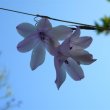
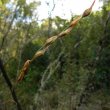
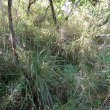
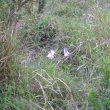
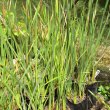


Comments
dierama pendulum
will this plant survive in the ballito area
Dierama in KwaZulu-Natal
Hi Joy
I think it should be fine as long as it is well sheltered from salty breezes.
Regards
Lorraine
Dierama
How do I prevent moles to attack the plant????
Moles or Mole rats?
Hi Elma
It is a common belief that moles eat bulbs, but this is actually not the case at all. Moles are insectiverous creatures and do not eat plant material. Your problem comes from the activities of Mole rats.
I have written a blog article about this. Go to http://kumbulanursery.co.za/blog/those-moles-again, where you will find the information you need.
Kind regards
Lorraine
Propagation of Dierama Pendulum.
Hi Lorraine, Your web-site is a national treasure! I started my indigenous garden in Cape Town about three years ago - a most rewarding experience - link to photos below. Can I propagate Dierama Pendulum by seed? Must the seed pods be left to dry on the plant? Should I crack open when dry to remove the individual seeds?
https://plus.google.com/photos/111490187814113413912/albums/594413361182...
Propogation of Dierama
Hi Carel
Dierama are quite easy to propagate from seed and you seem to have the right ideas. Leave the pods to dry on the plant but keep a watchful eye on them. As soon as they are crispy and dry to the touch, remove them before they have a chance to pop open. Each seed capsule has a number of small seeds inside it and these will fall out soon after opening. I like to collect the pods and wait until the seed casings dry out and pop open on their own, but they can just as well be removed before that. It looks as though you are going to have a good crop of seeds.
Thanks for including the picture of the Dierama - a lovely specimen.
What a stunning, dream garden you have. We don't see gardens like this in the Albany area of the Eastern Cape. The poor soil, scarcity of water and our frequent droughts ensure that grey, rather than green, is often the dominant colour.
RegardsLorraine
Lorraine
Discuss this plant
Share knowledge, ask a question or give an experience.